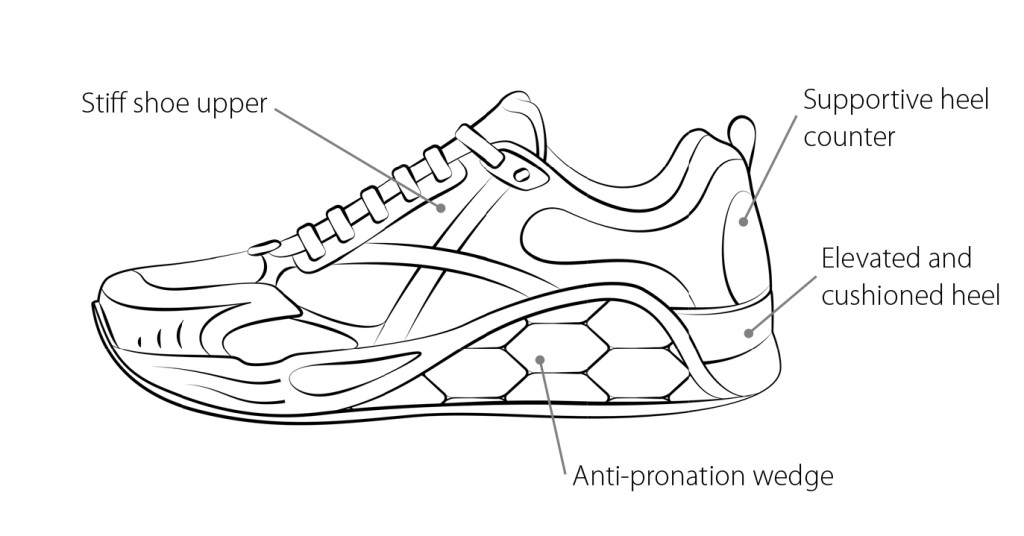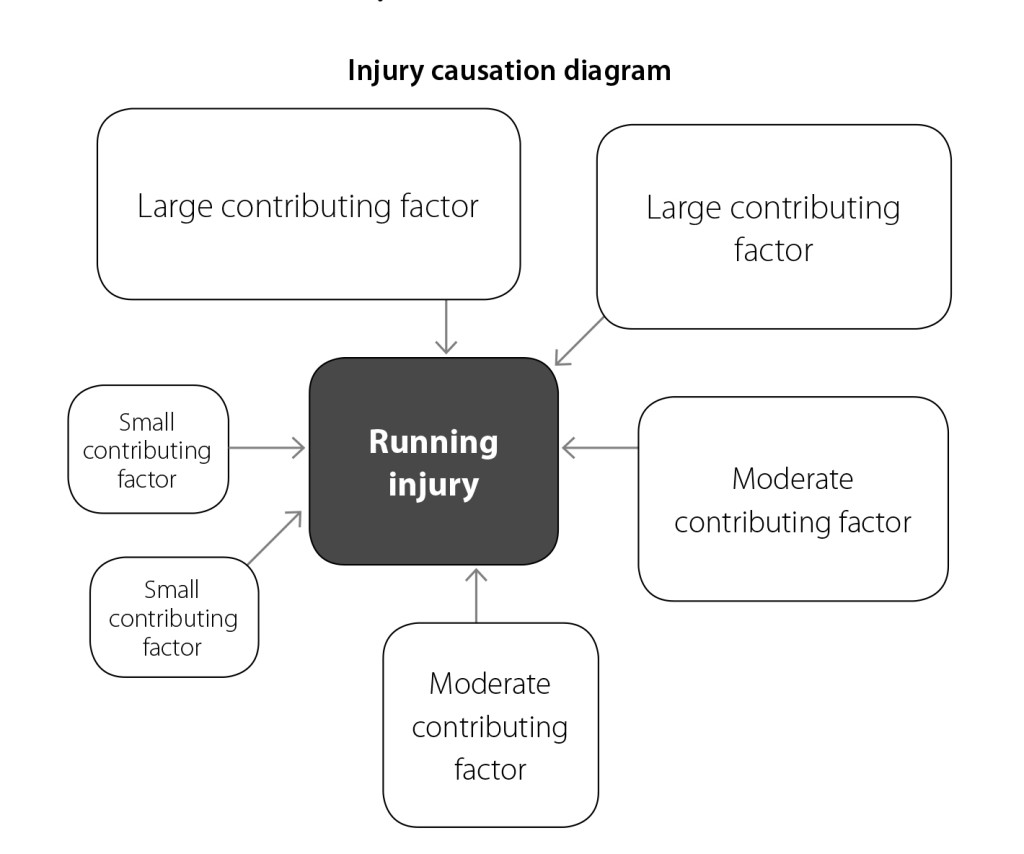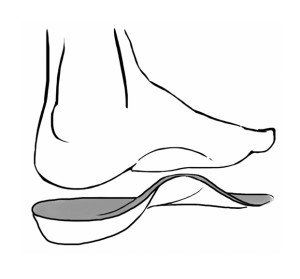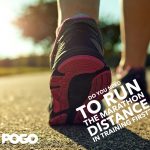The truth about Pronation and Orthotics
The truth about Pronation and Orthotics
As a physiotherapist I observe and am privy to two differing opinions held by two groups of runners: those who believe there is a role for orthotics, and those who not believe that orthotics play any significant role in injury minimisation or prevention for runners. The views can be both divisive and passionately defended by well-meaning runner’s who are trying to navigate their way through what is a complex area of sports science.
With this in mind I penned the following blog with the aim of shedding some light on pronation, and the role it has in running, and orthotics and the respective role that they play in a runner’s quest to run injury-free.
What is pronation?
Pronation refers to the rolling inwards motion that the foot makes when it comes into contact with the ground. The foot must pronate in order to move through its normal range of motion. The purpose of pronation is to allow the joints and tissues of the foot to absorb and dissipate impact forces that the foot encounters when it makes ground contact. These impact forces are then transferred up the kinetic chain through the ankles, shins, knees, hip, lower back and body.
Of chief importance for runners and indeed all lower limb athletes is the amount of pronation that occurs. Pronation can be quantified as either being mild, moderate or severe. The rate of foot pronation is also of importance. The rate of pronation refers to the speed by which the foot rolls in. At the mild end of the pronation spectrum, the runner’s foot may roll in only a small amount and in a relatively controlled manner (slow rate). In contrast, at the severe end of pronation, the runner’s foot may roll in very quickly and by a large amount (fast rate).
Pronation can be contributory to injury if there is too much of it or it occurs too -quickly. In my practice, I refer to such injury contributing pronation as being ‘pathological’ pronation. That is the pronation amount or rate (or both) that is contributing towards injury-development or injury propagation for runners.
Let’s take a look at how excessive pronation affects the body.
Understanding the effect of excessive pronation on the runner’s body
To discover the effect of excessive pronation on your your body, try the following exercise:
- Stand and pronate your feet (roll them in). What happens to your pelvis? Notice how collapsing your arch makes the knees and hips rotate inwards, and your pelvis drop forwards from the top down.
- Now supinate your feet (roll them out). What happens to your pelvis? Notice how as your arch lifts, your knees also ‘lift’ and rotate slightly outwards, and your pelvis drops backwards from the top down.
- Now flex (or drop) your pelvis. What happens to your feet? Dropping your pelvis will make your feet pronate.
- Now extend your pelvis. What happens to your feet? Extending your pelvis will make your feet lift ‘up’ with an arch.
This simple exercise gives you an appreciation of how foot pronation can alter the rest of the running body.
The War on Pronation
Over the years pronation has been portrayed as an enemy of runners, and much of this negative context and poor pronation ‘PR’ has been generated by shoe manufactures. Through the 1990s and early 2000s, shoe manufacturers centred a lot of their shoe marketing messages on the need to prevent pronation in order to decrease injury risk. Emerging research at the time did point to a link between pronation and lower limb injury risk for common running injuries such as plantar fasciitis and shin splints.[i] [ii] One research finding led to another and before long it seemed like the entire running world was out to prevent ‘pronation’.
What the shoe manufacturers and, indeed, the running world forgot during this time is that pronation itself is actually not ‘bad’. It is worth considering that if a runner’s foot was prevented from undergoing its pronation phase of motion, then the foot would strike the ground with a great deal of rigidity and subsequent force. A non-pronating foot would be akin to a rigid obstacle, such as a stump on the end of the leg, impacting the ground. Such rigidity on foot impact would likely prove to be disastrous for any runner’s ambition to run without pain or injury.
Rather than being absorbed by the foot’s joints and soft tissues working in concert (such as occurs when the runner’s foot undergoes pronation on impact with the ground), the impact forces would be shunted up the leg to the runner’s achilles tendon, calves, knees, hips and lower back. This would likely lead to an increased risk of lower limb injuries due to a relative overloading of these structures.
Hence runners need to have feet that pronate. If we didn’t we would quickly find ourselves in trouble.
Pronation and Shoe Selection
So what has pronation got to do with shoe selection? Well, if a runner does over-pronate (in quantity or in rate) and it is deemed contributory to the onset of a running injury, this may be remedied by the selection of an appropriate running shoe, which will help to slow down and control some of the excessive pronation.
Since the early 1980s, the major shoe manufacturers have all included anti-pronation features in their shoes. Such features include stiff heel cups (or counters) at the rear of the shoe, bulky and well-supported arches, stiff mid-soles, stiffer cushioning, and a multitude of proprietary technologies. Such as is illustrated below (from You CAN Run Pain Free!)
Conventionally hypermobile runners with low-arched feet are more likely to over-pronate and, therefore, require more ‘stable’ shoes. Meanwhile, runners with high-arched feet are likely to have feet that pronate less and, therefore, require more ‘cushioned’ shoes.
For many years, researchers and clinicians believed that anti-pronation features in shoes and orthotics assisted with the lowering of impact forces on runner’s bodies because they re-aligned the runner’s lower limbs. They proposed that anti-pronation shoes would stop the resultant ‘rolling in’ and collapsing of the knee and hip, thereby altering the runner’s physical body and the runner’s structural alignment.
In 2001, Canadian academic Benno Nigg proposed a new way of thinking about what role anti-pronation shoes actually played [iii]. Nigg refuted that they changed a runner’s structural alignment and he instead postulated that anti-pronation shoe features (and also orthotics) actually resulted in changes to muscle tuning and activation. That is, he proposed that the changes in muscles being used and their pattern of use subsequently reduced impact forces associated with over-pronation, and resulted in more normalised joint movement pattern during ground contact. Years later, Nigg’s paradigm remains the most commonly accepted rationale for how orthotics and anti-pronation shoes actually effect change on a runner’s body. However, there is far from consensus in the scientific world around Nigg’s paradigm.
The Current Landscape of Research Around The Effect of Pronation
Research suggests that the mechanisms of injury development and injury treatment through the control of pronation with anti-pronation shoes as an isolated factor, are still not well understood. The lack of consensus in the scientific literature, I belive point back to the fact that controlling pronation will only address one factor of running injury onset, of what is normally an array of causative factors for injury development (see below).
Despite the lack of scientific consensus around anti-pronation shoes, I maintain that if a runner over pronates and it is a contributory factor for the onset of a running injury, this may in part be remedied by the selection of an appropriate running shoe (click HERE to discover How to Select Your Next Pair of Running Shoes). An appropriate running shoe may help to slow down and control some of the excessive pronation.
The role of orthotics in controlling pronation
Sometimes, if pronation is quite marked or execessive, in addition to a well-selected shoe, an orthotic may be required or prescribed by a health professional, such as a sports podiatrist.
An orthotic is a device that may be either custom-made or prefabricated that is fitted inside a runner’s shoes. The orthotic will normally (not always) span the length of the foot and feature an elevated arch designed to control the excessive pronation of the foot. See the following illustration for an example. Orthotics can be made from rigid (such as carbon), semi rigid (thermoplastic), or soft (foam) materials.
Runners who routinely require some orthotic support in their shoes are often the hypermobile and severely over-pronating runners. Left uncorrected, their over-pronation may represent a major injury risk factor, When an injury does develop, the over-pronation has in effect become ‘pathological’. In these cases, the orthotic works to support the arch of the foot in reducing the ‘rolling in’ motion of the foot while running. It is also likely that the orthotic has an effect on the activation, tuning and patterning of the lower limb muscles as Nigg proposed (8).
Over-pronation can also be the result (or part result) of muscular weakness and poor activation of key muscles further up the runner’s kinetic chain (body). For example if a runner’s hips collapse or ‘drop’ under loading, this hip dropping will flow down the leg and can further exacerbate the degree of foot pronation.
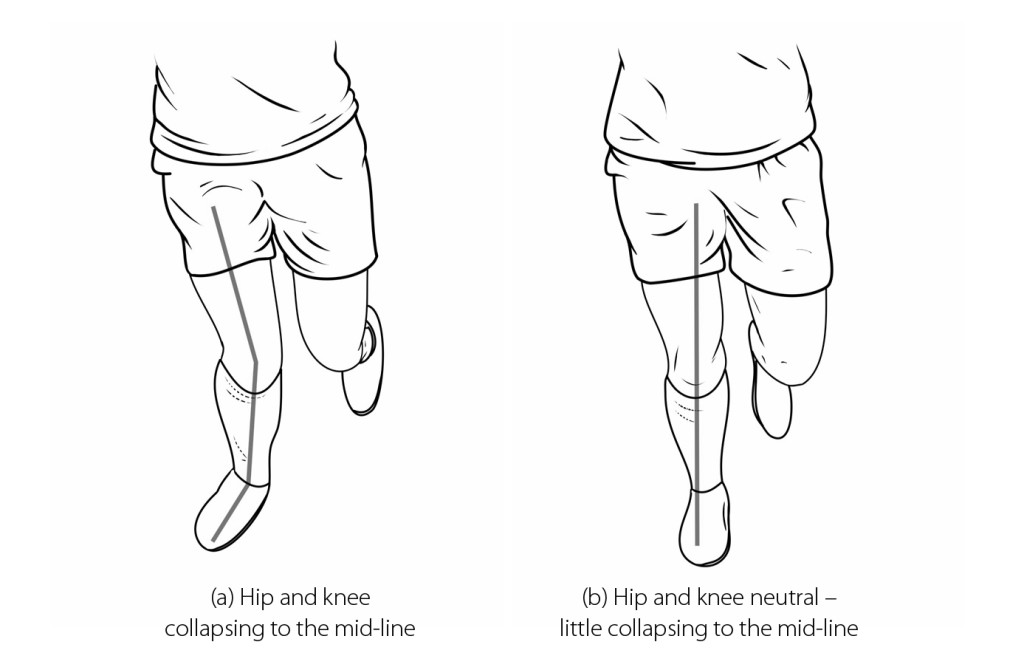
A deficit in hip stability further up the runner’s body can also exacerbate the amount and rate of pronation of the runner’s feet (source You CAN Run Pain Free!)
In my practice, I refer to this as being a deficit in ‘hip stability’. This is predominantly due to weakness of the hip musculature but can also be accentuated if a runner has a hypermobile mobility status. Click HERE for four of the most commonly prescribed exercises I give to runner’s needing to improve their hip stability.
In these cases, I tend to have a runner ensure that we begin addressing hip stability before I prescribe orthotic support. Often times, when the runner stabilises their hips by way of a prescribed hip strengthening process, the degree of their foot pronation lessens. This may then eliminate the need for an orthotic, or at a minimum modify the orthotic prescription.
A final note on orthotics
Many barefoot running purists advocate that wearing orthotics is unnecessary. Their view is an extension of their belief that running shoes in general hinder rather than help a runner in their quest to run without injury. In my clinical opinion as a physiotherapist, dismissing orthotics as being redundant, can be misguided. Taking this view can be problematic because it can ignore the very real and legitimate need that some runners have for orthotics, in order for them to be able to run pain and injury free.
References
- [1] Franz, JR, Corbyn M, Wierzbinski I, Kram R. 2012. ‘Metabolic cost of running barefoot versus shod: is lighter better?’. Med. Sci. Sports Exerc. 44 (8) pp1519–1525.
- [1] Ryan, M, Elashi, M, Newsham-West, R, Taunton, J. 2013. ‘Examining injury risk and pain perception in runners using minimalist footwear’. Br J Sports Med. Dec, doi:10.1136/bjsports-2012-092061
- [1] Heiderscheit, BC, Chumanov, ES, Michalski, MP, Christa, MW, Ryan,MB. 2011. ‘Effects of step rate manipulation on joint mechanics during running’. Med Sci Sports Exerc. 43 (2): 296–302.
- [1] Richards, CE, Magin, PJ, Callister, R. 2009. ‘Is your prescription of distance running shoes evidence based?’. Br J Sports Med. 43:159–162.
- [1] Taunton JE, Clement DB, McNicol K. 1982. ‘Plantar fasciitis in runners’. Can J Appl Sport Sci. 7 (1): pp 41–44.
- [1] Viitasalo JT, Kvist M. 1983. ‘Some biomechanical aspects of the foot and ankle in athletes with and without shin splints’. Am J Sports Med. May–Jun;11 (3): pp125–30.
- [1] Nigg, BM. 2001. ‘The role of impact forces and foot pronation: a new paradigm’. Clin J Sport Med. 11 (1): pp 2–9.
- [1] Tam, N, Wilson, JA, Noakes, TD, Tucker, R. 2013. ‘Barefoot running: an evaluation of current hypothesis, future research and clinical implications’. Br J Sports Med. (0) pp: 1–8/bjsports-2013-092404.
PAIN-FREE. PERFORM.
Brad Beer (APAM)
Physiotherapist, Author AMAZON Running and Jogging Bestseller ‘You CAN Run Pain Free!’, Founder POGO Physio



